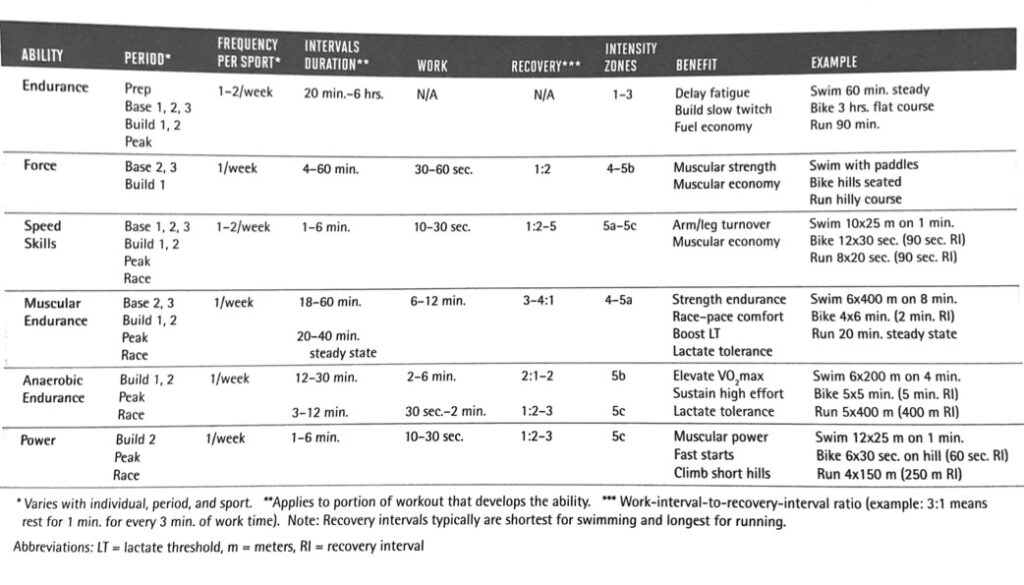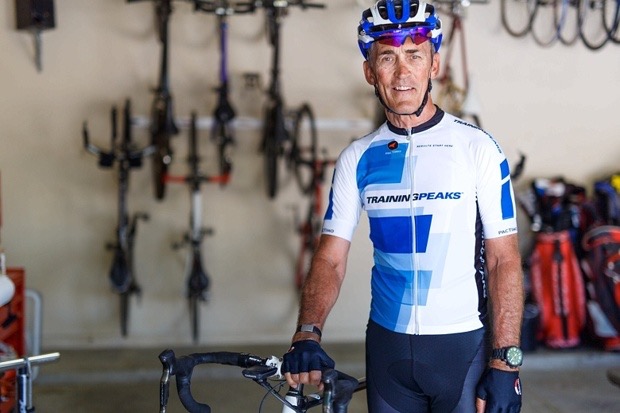Joe Friel is an elite level triathlon and cycling coach who has literally written the bible on training for both sports. He has a Master’s Degree in Exercise Science and has coached Olympian’s and Ironman champions.
His successful line of Training Bibles have been a staple on my bookshelf since the early editions:
Friel’s philosophy on training has guided and helped develop mine (along with the other coaches from this series of articles).
This is the fourth article about Periodisation (English spelling with an ‘s’, American spelling is traditionally with a ‘z’) and the methodologies from coaches that guided my early philosophies around periodisation of training seasons and event build ups. Also have a read of last weeks article about Jack Daniels’ PhD:
Macrocycle
A macrocycle is a complete build up for an event.
A full Annual Training Plan (ATP) could contain 1-3 macrocyles. Each macrocycle cycles through from the completion of one season/event to the completion of the next, and can be broken into 6 distinct stages:
- Transition (post-season)
- Preparation
- Base
- Build
- Peak
- Race
The length of the phase will vary depending on the total duration of the build up. Friel’s philosophy is based on that of Tudor Bompa (the godfather of periodisation) where the season starts with more generalised training and builds towards being more specialised as you move towards the main events of the season. But as Friel says, “it involves arranging the workouts in such a way that elements of fitness achieved in an earlier phase of training are maintained (principle of reversibility) while new ones are addressed and gradually improved (principle of progressive overload)“.
Mesocycle
Each of the phases (Transition, Prep, Base, Build, Peak and Race) within the macrocycle are known as a mesocycle. More on these later.
Microcycle
Each mesocycle can further be broken down in to smaller units or blocks of training usually 6-10 days long, most frequently it will be a week. Depending on the athlete I’m working with occasionally I will use microcycles that are different from a week. For example some people working shift work cycle through their lives with 4 days working, 4 days off. For people like this I will typically use an 8 day microcycle (but have experimented with using a 4 day microcycle). Other people work 6 days and then have 4 days off, here I use a 10 day microcycle. But for the majority of us who work for 5 days and then have their weekend off, I use a 7 day microcycle.
Each mesocycle can have a wide amount of microcycles, some can be single microcycle long, others many microcycles (up to 30 in some instances but this is not typical).

Basic Abilities
Although Friel puts emphasis on improving weaknesses or what he calls Limiters. Obviously you need to be selective about this. If your weaknesses don’t or won’t impact your performance significantly your training time and efforts may be more appropriately directed elsewhere.
Friel talks about the three key areas for success:
- Endurance,
- Force, and
- Speed Skills.
As well as combining these:
- Muscular Endurance (Force combined with Endurance),
- Anaerobic Endurance (Speed Skills combined with Endurance), and
- Power (Force combined with Speed Skills) – not to be confused with measuring your power output.
Endurance
Endurance is simply the ability of the athlete to avoid or delay the onset and affects of fatigue. Typically this is in reference to aerobic exercise. Training at these intensities enhances the function and performance of slow twitch muscle fibres. It will also help conserve carbohydrate (glycogen and glucose) as a fuel for exercise, whilst enhancing the uptake of fat as the primary fuel.
Endurance can be trained through long, steady, distance (LSD) based workouts, as well as through consistent, chronic exposure to activity. When I was training to be a Physical Training Instructor (PTI) in the NZ Army we would have to run everywhere (no walking unless we were injured). Each morning we would run from our barracks to our classroom, then to get to the mess for lunch, we would run there and back again, and at the end of the day we would run back to our barracks, not to mention all the running in between. Towards the end of this course I ran a half marathon and then another half marathon a few weeks after graduating. I ran both of them in 1:22 and a handful of seconds with no specific training, purely on the chronic endurance I build up by running everywhere during my working day.
Force
“Force is the ability to overcome resistance.” This resistance can be applied by gravity as you run or cycle up hills; the resistance needed to be overcome to ride in a big gear; swimming through rough water; or, riding into a headwind.
This Force isn’t the same as that developed by strength or team sports based athletes, that level of strength isn’t required by endurance athletes.
Speed Skills
Speed skills relates to economy of movement, or enhancing the quality of your technique. This is a function of the nervous system and is totally independent of your physical fitness. An example of that would be the former top-level swimmer who hasn’t swum in years, but had developed a very efficient and effective technique. When they make an impromptu return to the water, their muscle memory and efficiency developed through years of swimming enables them to out swim fit but inefficient swimmers easily.
Muscular Endurance
This is the ability of your muscles to sustain a relatively high force for an extended period of time. Your ability to tolerate lactic acid plays a big role in this component.
Anaerobic Endurance
This is your ability to resist fatigue at very high efforts. Once again good tolerance of lactic acid will contribute to this, as well as the ability to turn the arms or legs over very quickly. This is an important quality to develop for short-distance events.
Power
This is the ability to maximise the force production and to do it very quickly. In essence, it is your raw power, or your sprint power. This relies on the nervous system to send strong signals for the muscles to contract maximally.
Annual Training Plan
With each mesocycle of training being split into microccyles, here is a rough summary of what each will involve, but this will depend on the exact goal and aim for the targeted event.
Transition
This is 1-6 weeks to recover from the previous season or major event prior to commencing the main training build up. It allows you to unwind and freshen up after a demanding event.
Preparation
3-4 weeks long within this phase you prepare to train. Effectively you are commencing the build up for the next season/event.
The main focus during this phase is endurance, done at lower intensities and through a range of modalities, you can include cross training in addition to swim, bike or run training depending on your sport.
Force can be trained during this phase with general resistance training.
Speed skills training begins here and is continued to be included throughout the build up, with portions of workouts focused on enhancing technique included in all phases of training.
Base
Overall this mesocycle takes between 8-12 weeks and can be further sub-divided into three distinct phases. The main focus of this phase will be on endurance.
Further development of Force training will initially continue from the Prep phase but will taper off prior to commencing Base 2. Some athletes that have a specific need to continue Force training can continue to do so right through the season.
Base 1
Will see a continuation of endurance training at lower intensities and with the inclusion of cross training like mountain biking. Complete the last of the Force training session within this phase of training.
Base 2
Endurance training continues to get longer and cross training is eliminated as training becomes more race like in duration.
This is when you would start to include Muscular Endurance training with longer periods at Level III intensity
Base 3
Endurance training continues to progress from Base 2.
Muscular Endurance training continues through this phase with an increase in intensity to Level IV and Level V for shorter periods with an even shorter Rest Interval (RI) separating the work efforts.
Build
This mesocycle will typically last between 6-8 weeks and will see an increase in intensity, a focus on weaknesses and maybe the inclusion of some lower key events. It two can further be subdivided into a couple of further sub-phases.
As we move through the build phases Muscular Endurance efforts will have progressed to 20-40 minutes of non-stop efforts at Level IV.
Build 1
Anaerobic Endurance for athletes this is appropriate for can be included through both Build 1 & 2, the duration of intervals is quite short and the recoveries longer still, but the intensity is very-high.
Build 2
Anaerobic Endurance intervals can be done at a higher intensity (and shorter duration) for athletes that it is suitable for.
Training to develop maximum Power can be included during this phase as long as it doesn’t compromise other components being trained and prepared.
Peak
This is where we can look to fine tune our performance by tapering off our training and consolidating race readiness with further events that are of lesser importance than the main goal of the programme. It’ll last only a couple of weeks at most.
Race
The final phase of the programme will include the most significant events of the season/build up and last no more than a few weeks.





Friel also explains alternative Macrocycle approaches, ie, reordering the Mesocycles, from the traditional approach which is the basis of his books structure.
I find the traditional periodisation is quite workable for the ‘Tri’ distance events, eg, Enticer, Sprint, Olympic, but not well suited to 70.3 and IM. I say that because most age groupers will need to increase their distance training the closer they get to their target event, which is virtually the opposite to the traditional approach